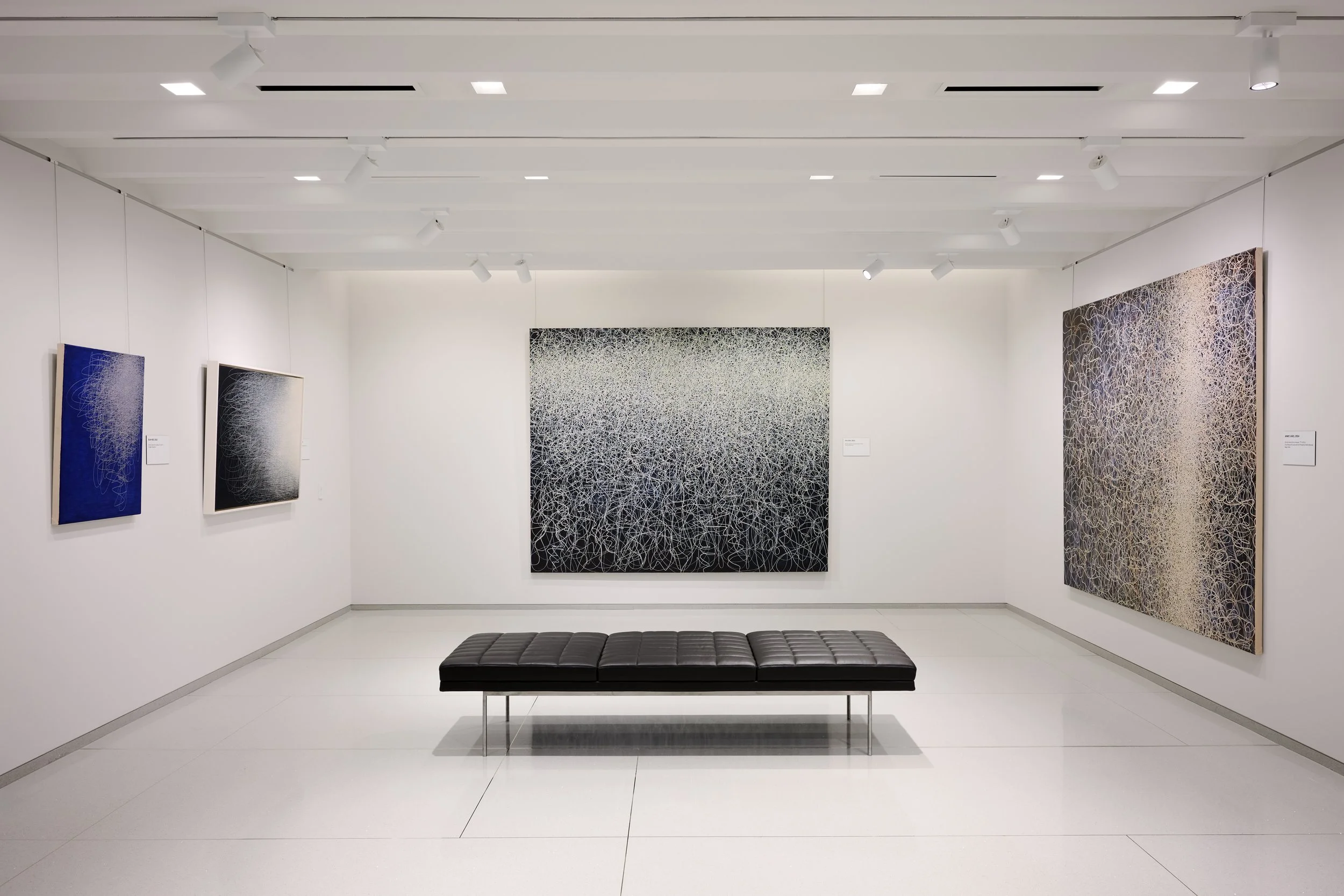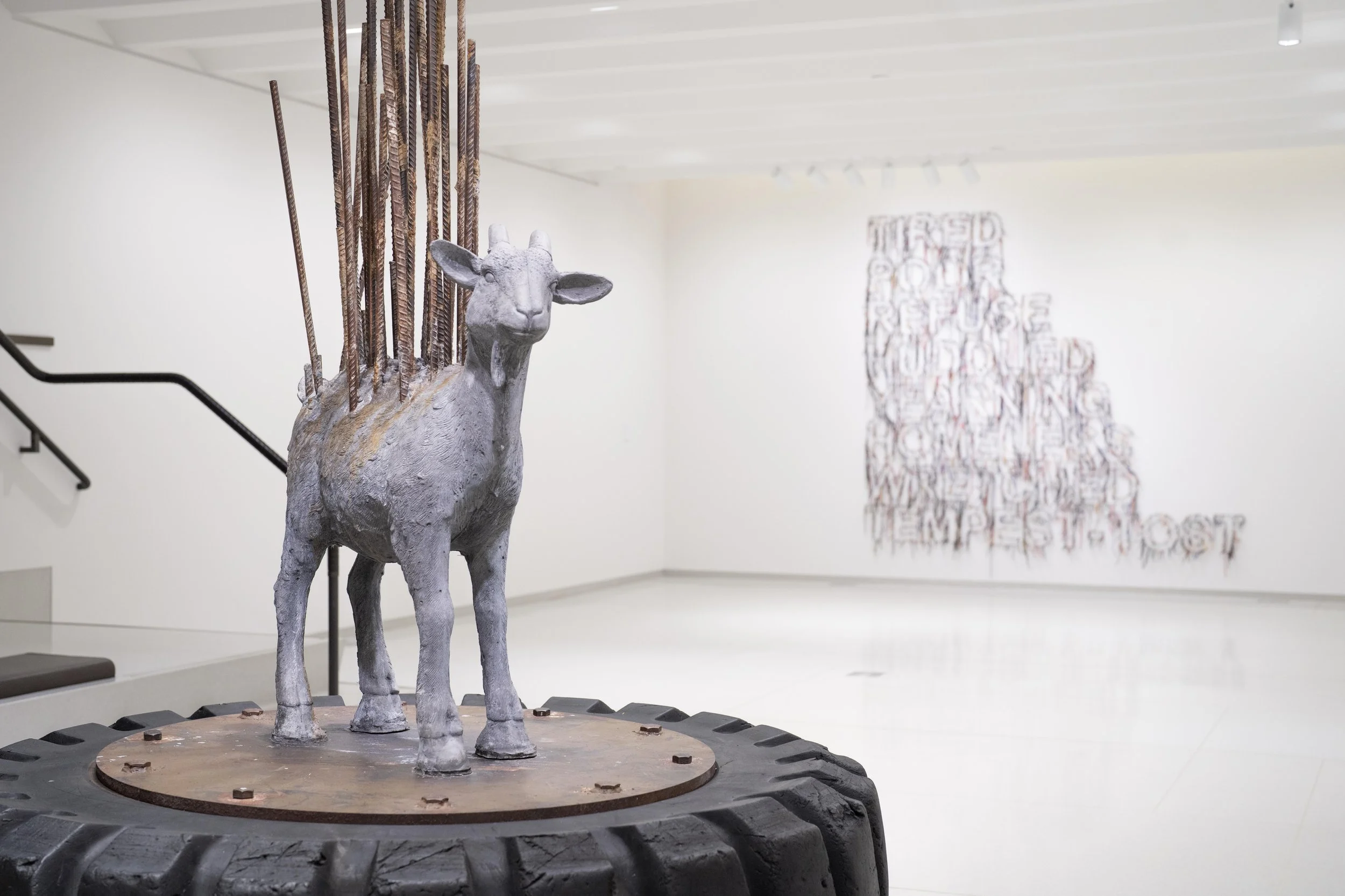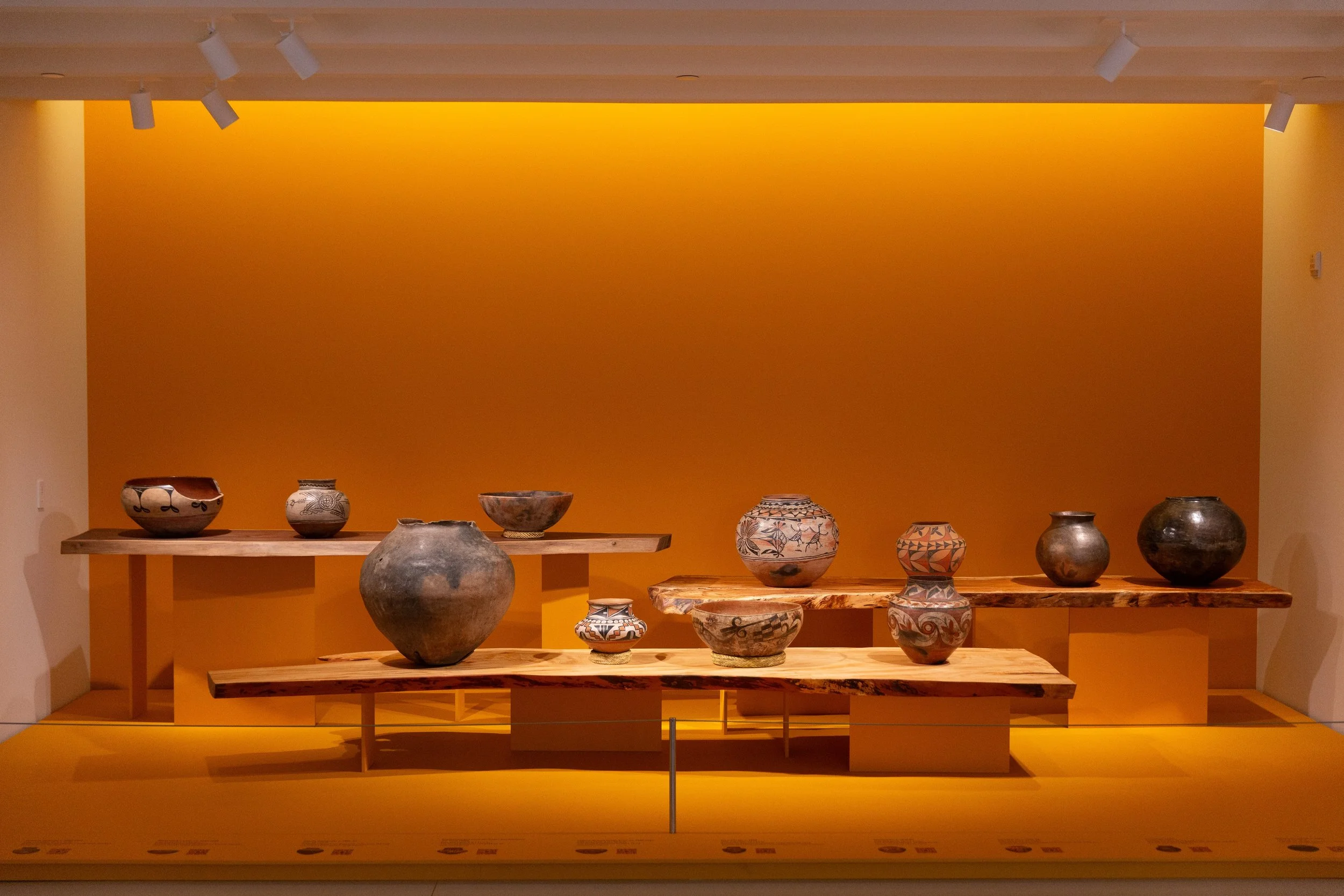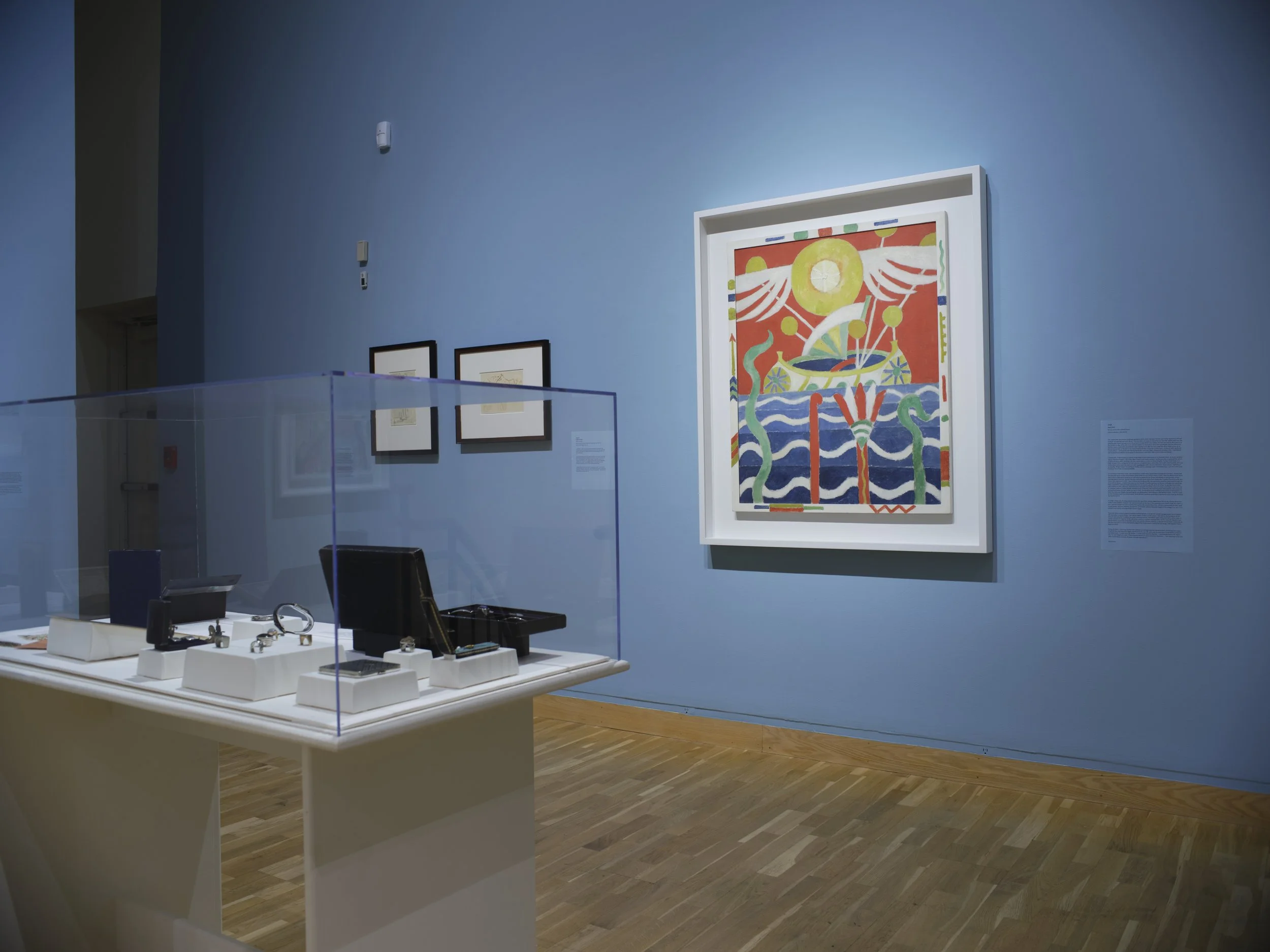Hot Coffee conversation with Rick Kinsel, President of The Vilcek Foundation, New York
Published Monday, August 4, 2025
The Vilcek Foundation was established in 2000 by Jan and Marica Vilcek, immigrants from the former Czechoslovakia. The mission of the Foundation was inspired by Jan and Marica’s respective careers in biomedical science and art history, as well as their personal experiences and appreciation for the opportunities offered to them as newcomers to the United States. Since then, the foundation has awarded over $8.7 million in prizes to foreign-born individuals and supported organizations with over $6.8 million in grants. This year’s prizes were given in biomedical science to Marianne Bronner (born in Hungary), recognized for her pioneering work on neural crest stem cells, in visual arts to Guadalupe Maravilla (El Salvador), celebrated for symbolic, immersive works exploring migration and ritual and for curatorial work to Oluremi C. Onabanjo (born in UK to Nigerian parents), for her critical curatorial approach examining Blackness through photography. It was a pleasure to interview Rick Kinsel, president of the Foundation, and ask him about the criteria behind the selections, vision of the organization, and whom he would dream of collaborating with.
Nina: Imagine you are in your favorite coffee or tea spot. Where is it? What are you drinking? What are the three things you see right now?
Rick Kinsel: That is a great question. Location really impacts the senses. For example, paintings look incredible in Santa Fe because the light is so strong and bouncing off the mineral-rich atmosphere, and there is no humidity in the air to refract the ambient light. This brings forth and enriches the reds, yellows, and purples in the artwork.
The taste of coffee is altered in the same way, I find. In Hawaii, where the Vilcek Foundation does a lot of work, my go-to is vanilla macadamia nut Kona coffee roasted at a place called The Curb in Kaimuki. The Arabica beans are grown in high-altitude fields of Kona, where moist clouds rake over the coffee trees. A latte of this—while running my early-morning errands, like choosing papayas at the farmers’ market—is sublime.
The urban opposite of this is just as wonderful, like Café Central on Herrengasse in Vienna. I like their Vienna Mixture—a latte made with two espresso shots, followed by a layer of hot milk, and topped with a dollop of frothed hot milk. Café Central is a historic, high-style Viennese coffeehouse, where notables, past and present, gather. Think Sigmund Freud, Adolf Loos, and JosephHoffmann. It is a time capsule to 1900 (though the place dates to 1876). Here, Old World sophistication and waiter customs still live. You are served with top-quality glass and stainless steel, all of which is polished before you sit down. Both of those places would tie as my favorite.
Il Lee Installation view, © Jason Schmidt. Photo courtesy of the Vilcek Foundation.
Nina: You have been the president of Vilcek Foundation for nine years, while being part of the foundation leadership for over two decades. How do you feel the role and mission of the foundation have changed over time? Have your priorities shifted in the uncertain political climate of recent years?
RK: Our mission has changed a lot since its inception. When Jan and Marica Vilcek established the foundation in 2000, it was to be a science advocacy organization to fund biomedical research. But within the first few months, we understood that by tailoring and focusing our mission into a much more bespoke and unique thing, we could make a more direct impact. So we thought long and hard about what would be the most meaningful to all of us.
The Vilceks emigrated from Czechoslovakia in 1965. Once they were in New York and safely liberated from the communist regime, Jan, who was a young virologist, and Marica, a young art historian, were both free to pursue their careers, and that meant so much to them. And in gratitude, they reciprocate by recognizing immigrants who are making significant contributions to those fields today.
They arrived in America, which was open and embraced them. And when they witnessed the spike in anti-immigration sentiment across the country after September 11th, they saw the value of the foundation and became even more motivated to celebrate the gifts that immigrants bring to the U.S. economy, culture, and medicine. The best talent from across the globe migrates here. So we remain steady in our support of immigrants and their importance to our society.
Il Lee Installation view, © Jason Schmidt. Photo courtesy of the Vilcek Foundation.
Nina: As I have read about the history of your foundation, the grants and prizes given out to noteworthy figures in the cultural and scientific fields are cornerstones of what you do. Can you please tell us more about your process? How do you choose the fields you look at from year to year, as well as the recipients of the grants and prizes?
RK: Our prizes and grants are two of our three big initiatives. During my time as president, we have doubled our grants payout, we have created two new prizes and doubled the number of prizes awarded in the arts.
Grants are very different from prizes—they are awarded through an application process. Institutions and organizations apply for grants for projects in alignment with our mission: supporting immigrants and the arts or sciences. This year, we received over 1,300 grant applications, which is very exciting as this was our first open call. As we select the grant recipients from this applicant pool, one of our priorities is to award grants in places where we haven’t before, including the territories of the United States. We are trying to reach as much of the nation as possible.
The process of selecting prize winners is elaborate and ongoing. We have a dedicated staff that focuses on it year-round and a wide network of leaders in various fields who contribute to the process.
Biomedical science is a set of award categories, but the arts are a rotating wheel of a dozen categories. Our prizes in the arts include fashion, culinary arts, literature, filmmaking & acting, theatre, dance, contemporary & classical music, architecture, design, and visual arts & curatorial work.
We work four years in advance of the actual awards, and we watch all of these domains of the humanities very carefully, to assess which ones are most active, rich, or relevant now. We rely heavily on a large network of trusted advisors who are true experts in all of these fields. They serve as formal advisors, and some serve as jurors. Our juries are usually made up of five to seven members, and they deliberate and choose winners. I cannot choose winners, the Vilceks don’t choose the winners, we are involved in the process, but we rely on the team of professionals that we ask to be the jury.
Installation of the Nari Ward: Home of the Brave exhibition at the Vilcek Foundation. In addition to being a featured artist at the Vilcek Foundation, Nari Ward won the Vilcek Prize for Fine Arts in 2017. Image courtesy of Vilcek Foundation/Brian Cavanaugh.
Nina: Do you have rotating jury members who you know will again become part of the jury over time?
RK: Yes, we are always on the lookout for bright and capable individuals. It’s a big part of my job to watch for people in cultural spheres and in the sciences who would be good committee members, consultants, or jury members. These members of our network watch their domains for talent. They roll up their sleeves and really do the research—the heavy lifting—and report back with detailed dossiers. We have just selected the winners for the 2026 fashion awards, and now we are working on the awards for 2027, which will be in the culinary arts.
Grounded in Clay: The Spirit of Pueblo Pottery was developed in partnership with the Vilcek Foundation and the School for Advanced Research and was curated by the Pueblo Pottery Collective, a group of more than 60 Native American community members convened from the 22 Pueblo communities in the Southwest. The Collective was established in 2019 specifically to develop an exhibition that centers the voices of Native American people in the curation and display of Native American art. Photo courtesy of the Vilcek Foundation
Nina: Traveling exhibitions and exhibitions on view at the Vilcek Foundation, New York, are yet another facet of your involvement in the visual arts sector. What will be the next project on view?
RK: Our current in-house exhibition is Il Lee—Energy and Flow: Abstraction of Movements. It’s an incredible abstract artwork by a South Korean artist who synthesises surface, medium, and physical motion to create dynamic 2D magical environments that I just love.
Our big traveling exhibition right now is Grounded in Clay: The Spirit of Pueblo Pottery. It has been on the road for six years and will be in seven museums before its end, including the Metropolitan Museum here in New York. This was a milestone project because it was curated by the members of the Pueblo community, not by any one outside curator. The community-curator model of Grounded in Clay was a revolutionary approach a few years ago, but is now being embraced as the standard for working with groups on exhibitions.
One of our core principles is making art accessible, especially to areas of the country that are often overlooked by East and West Coast institutions. We know how complicated mounting an exhibition is, and also how meaningful it can be. We have a small collection but it is constantly on tour. We share what we have.
One of my favorite arts initiatives is our coloring books, which make art accessible to younger audiences like middle-schoolers. We consider each one of these like a mini-exhibition catalog. There have been six books in the series so far. Our Latinx coloring book was a huge hit—it’s going into its third printing! On October 14 of this year, we will be publishing The Coloring Book of African Art through the Ages with the Brooklyn Museum. I am thrilled with their success and am eager for future collaborations.
Our next in-house exhibition is amazing, but it’s also a total secret. I can’t share anything about it yet. It’s to mark both our 25th anniversary and the 250th anniversary of the United States, so it is going to be big and exciting.
Installation of the "Marsden Hartley: Adventurer in the Arts" exhibition at the Bates College Museum of Art in Lewiston, Maine. Luc Demers, Art Photography.
Nina: And just a brief follow-up question on this, since you mentioned these different, yet specific locations, how do you decide on this kind of engagement with a specific geographic locality outside of New York?
RK: The Vilceks went to Santa Fe for about 15 years, roughly from 1990 through 2006. They connected with Santa Fe and supported the Santa Fe Opera. I love it there also. The foundation, since its inception, has been very active in Honolulu. We have a huge network there, including an important program with the Hawai’i International Film Festival for their New American Perspectives program, which has been running for 20 years and has quite a following.
These are both places where multiculturalism is an intrinsic part of the culture, as it is in New York City. These places connect with our mission, and we have been cultivating relationships and partnerships in these locations for 25 years.
Guadalupe Maravilla, recipient of the 2025 Vilcek Prize in Visual Arts. Photo courtesy of Peter Hurley/Vilcek Foundation.
Nina: If you could collaborate with any artist, alive or dead, who would it be?
RK: Well, if given the opportunity to collaborate with anyone, I would gravitate towards Great American producers, rather than artists. Visionaries like Stanley Kubrick, Dolly Parton, and Fred Rogers from PBS. Jim Henson, Samuel Goldwyn, the film pioneer, and Henry Marquand, who was one of the visionary founders of the Metropolitan Museum of Art. These are the kind of people that I would want to know and learn from.
I was lucky to have a friendship with Mike Nichols, the celebrated director and producer, and he was just wonderful. He was generous with me with his time, and I learned a lot from him. We talked mostly about the production of film and theater, and I took notes. All of these people excite me, and they have my deepest respect.
I often find myself producing projects with artists and creatives, and I am always encouraging them to go bigger, to be bolder, to be clearer in a message, to be stronger, to distill. These are multifaceted and multidimensional producers. They produce with no ego—the work is not about them, but focused on the work. I work in the same vein—my work is never about me.
Portrait credit: courtesy of Domenica Bucalo, PhotoVogue






